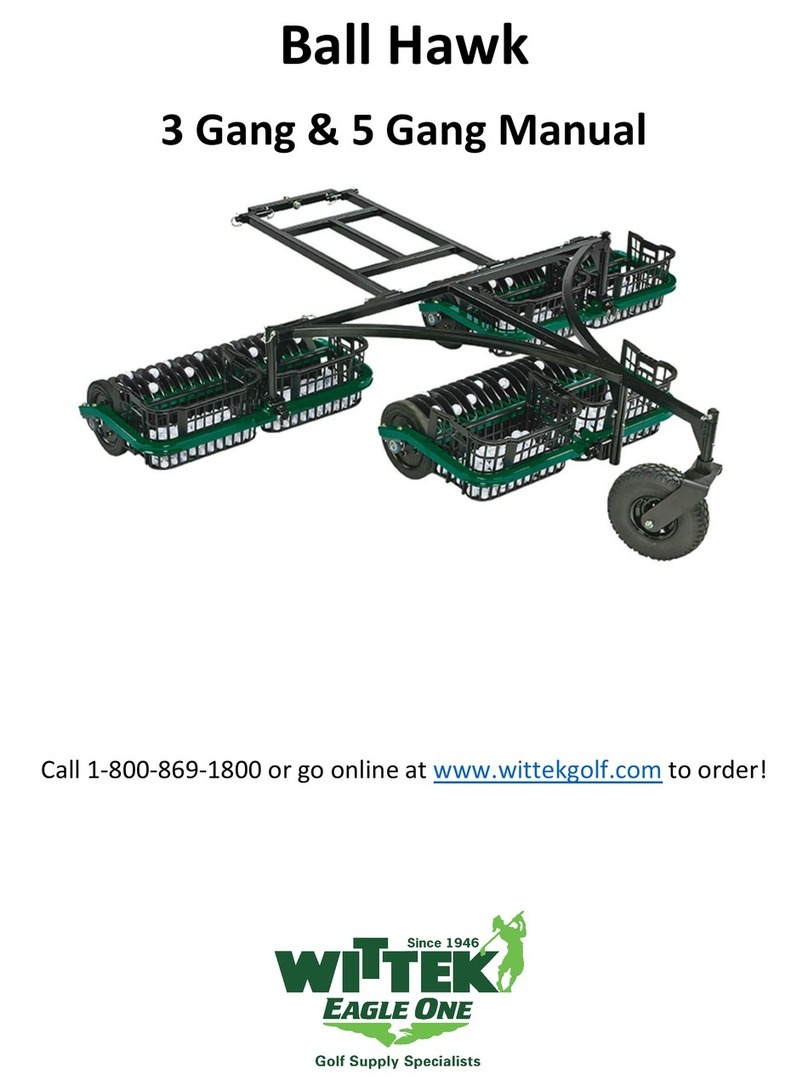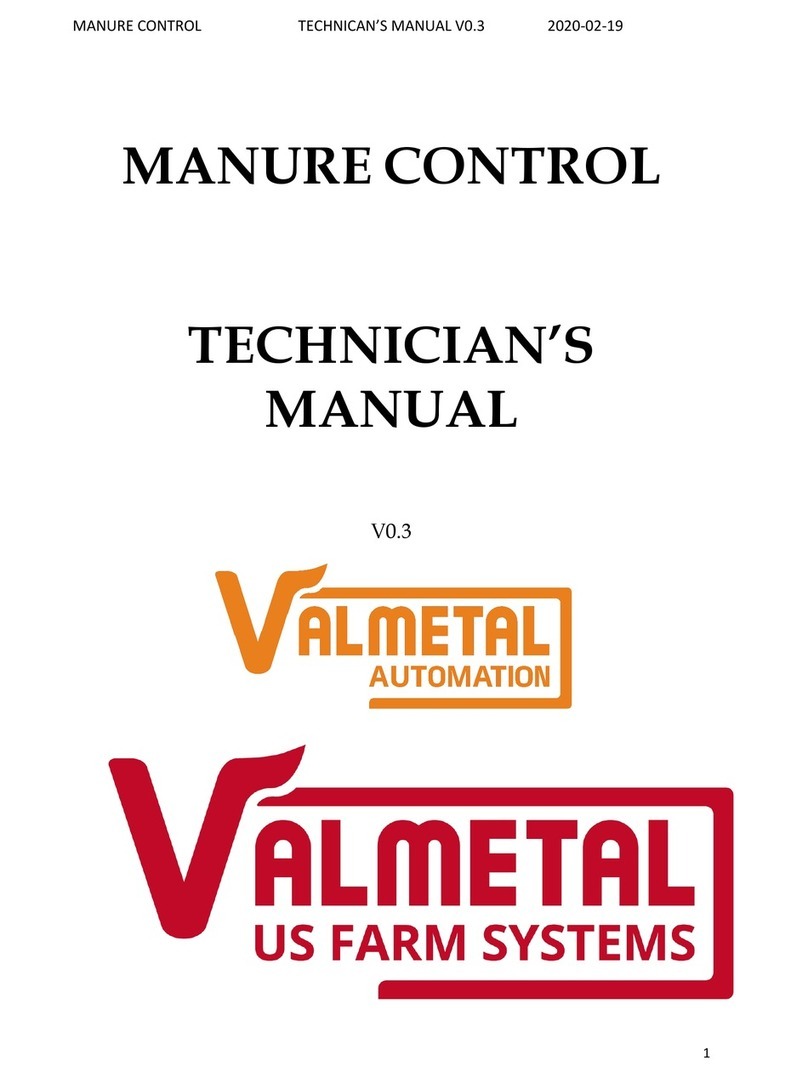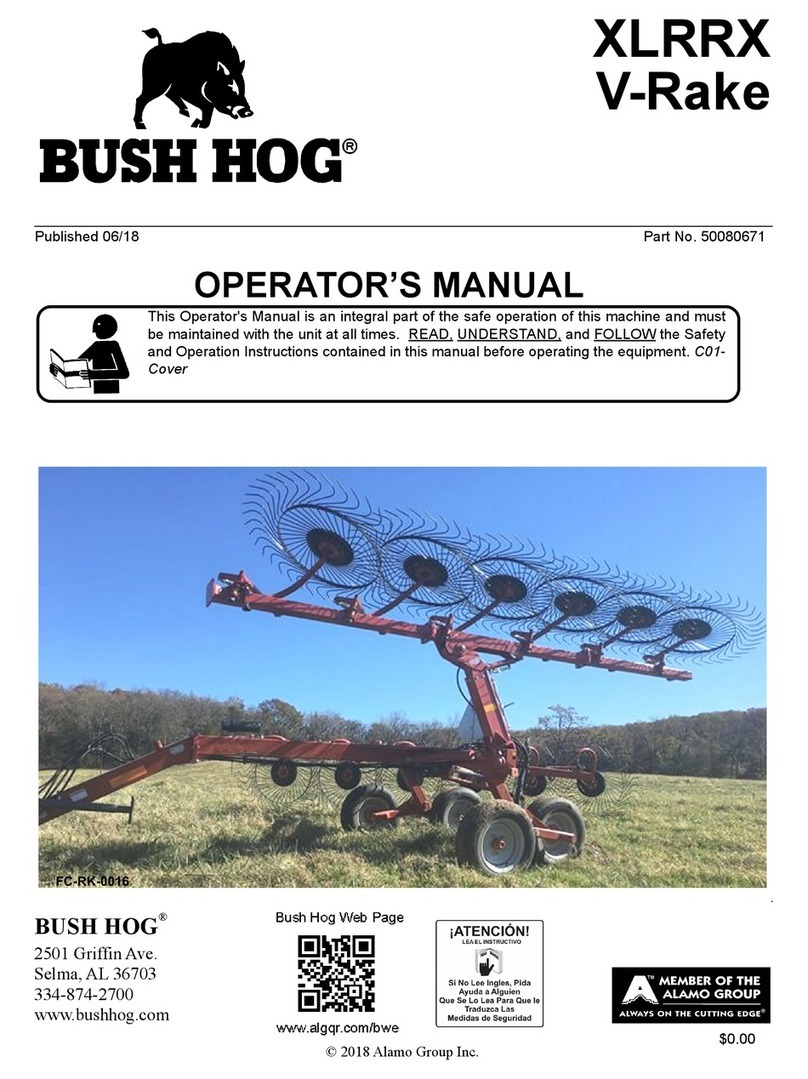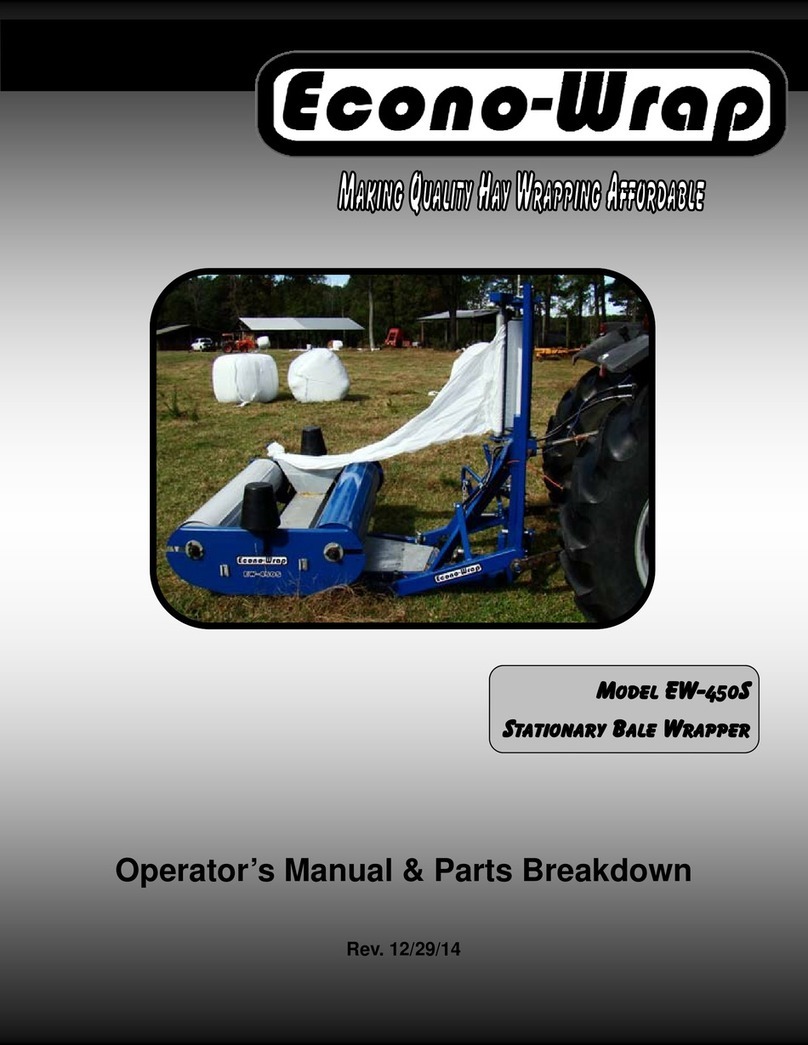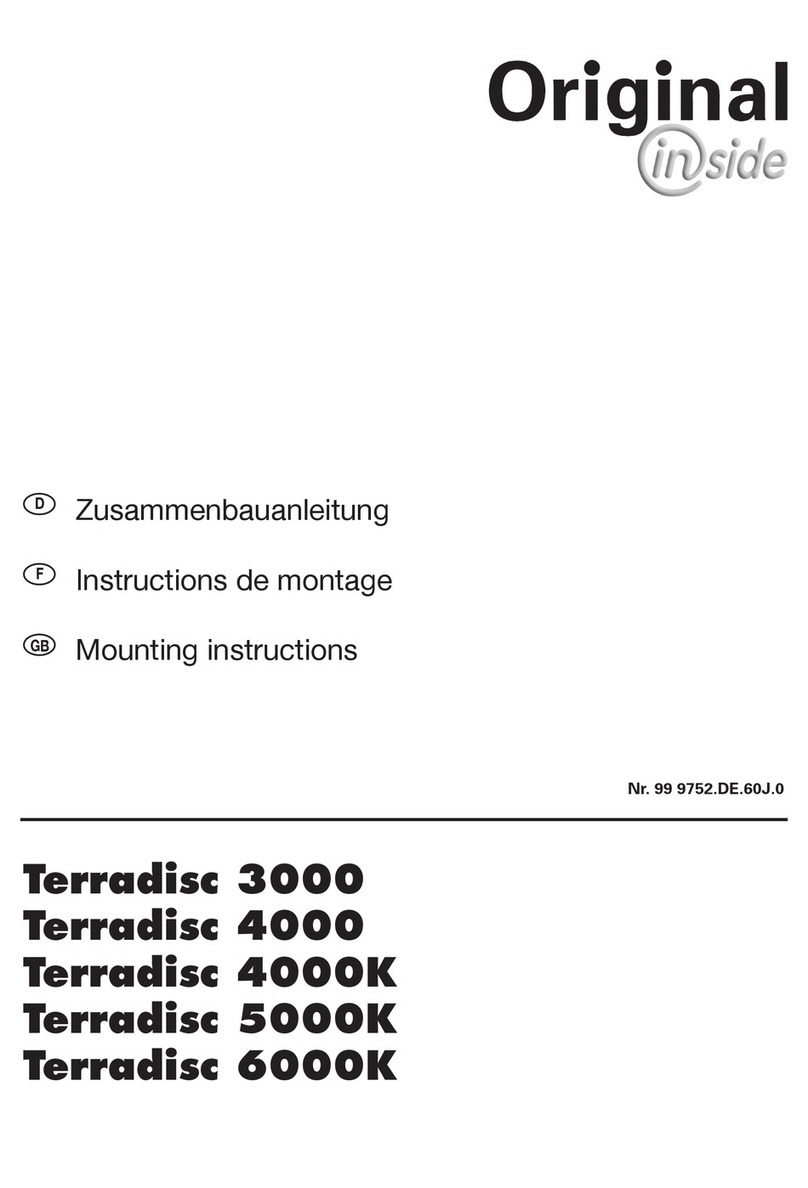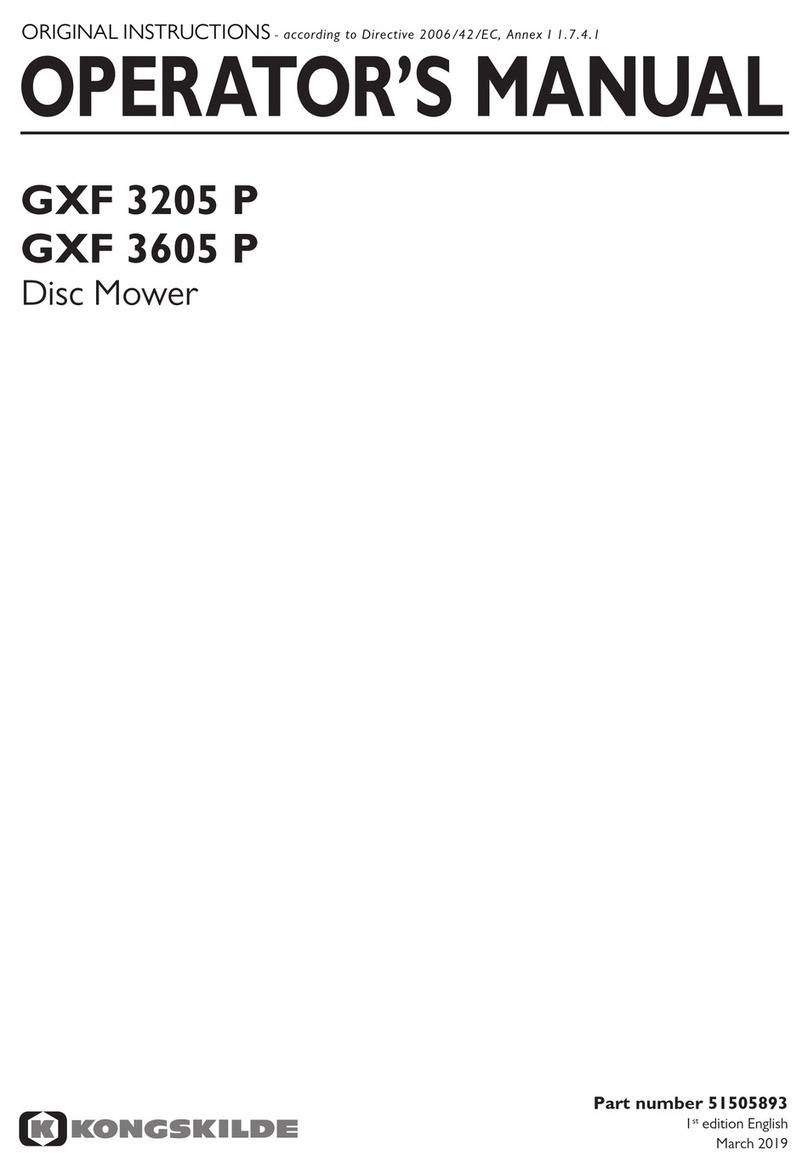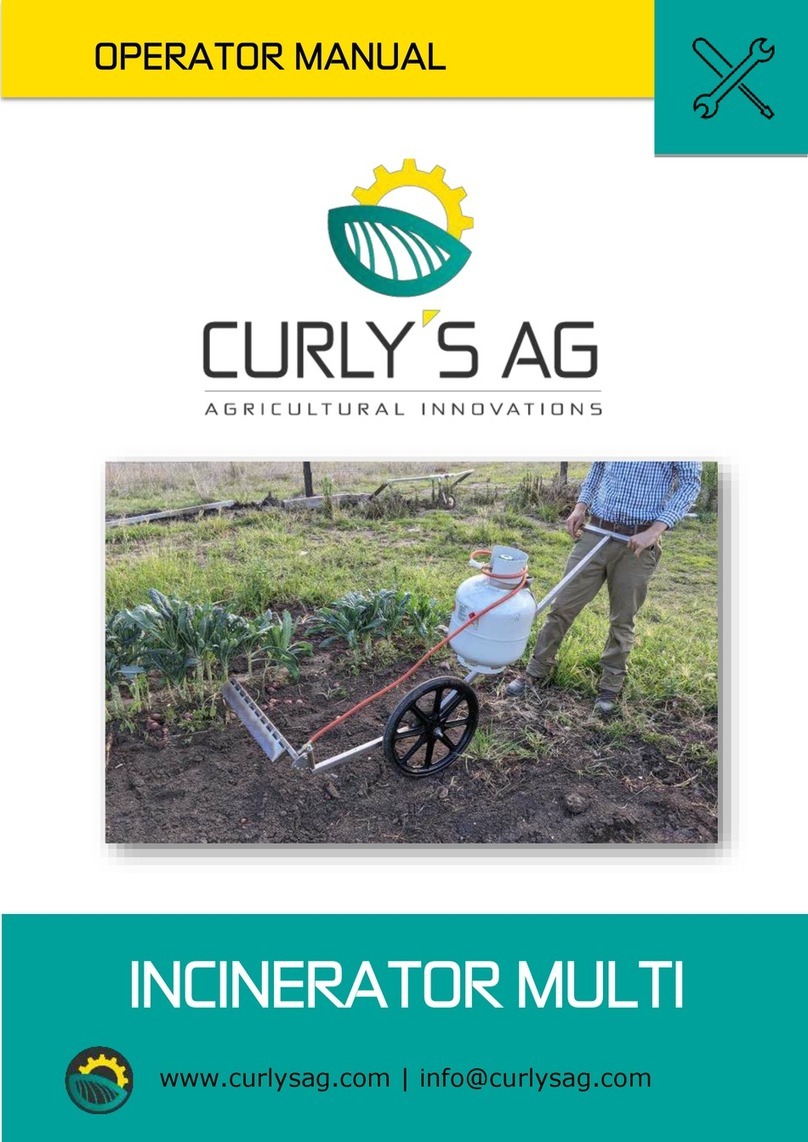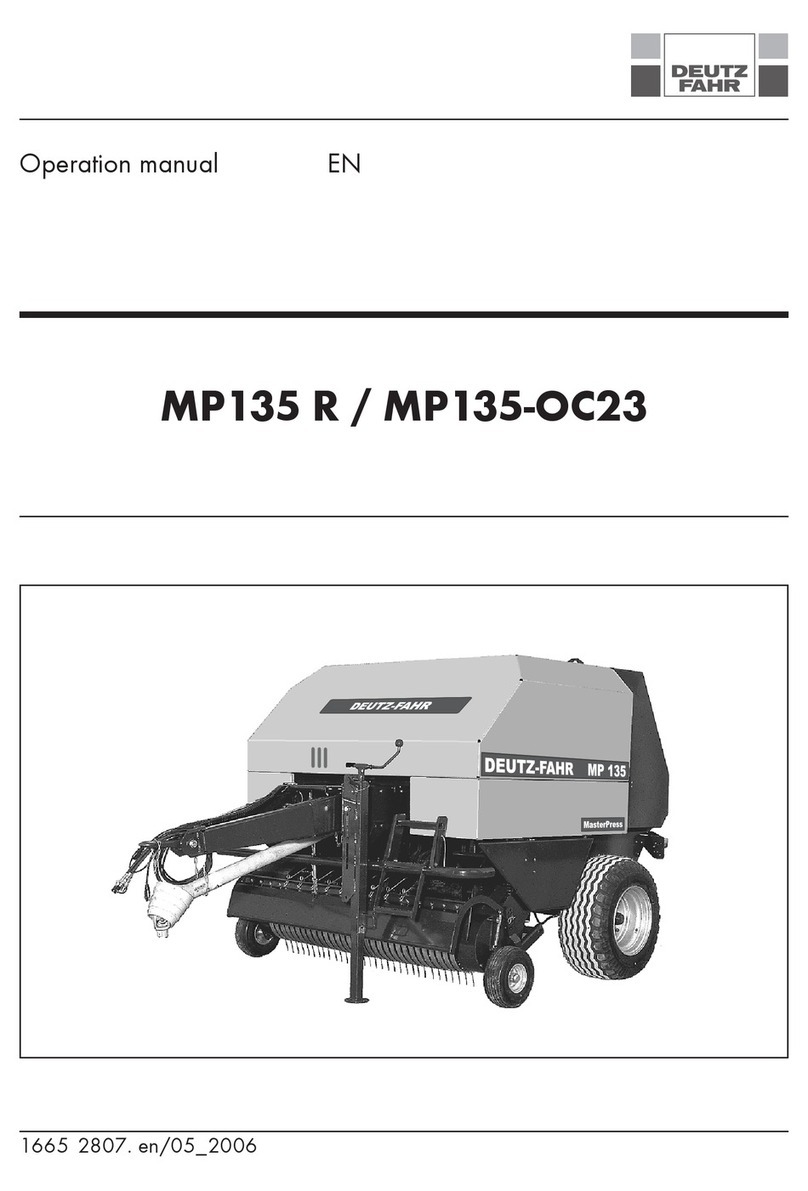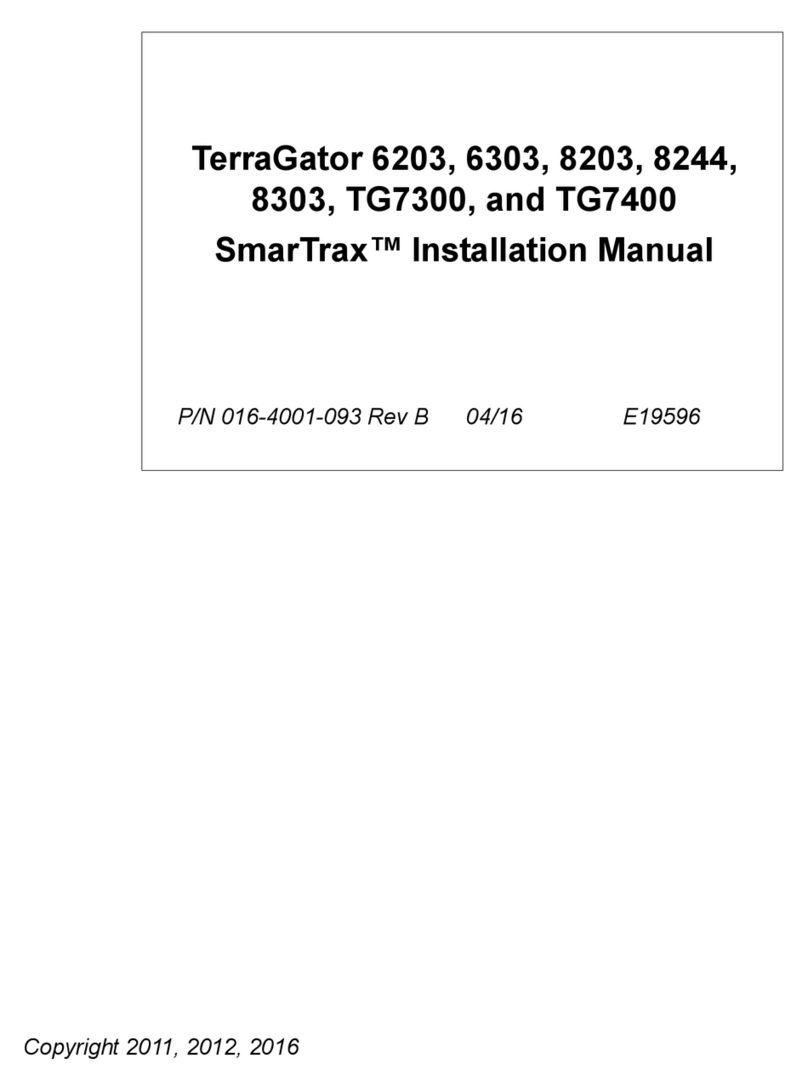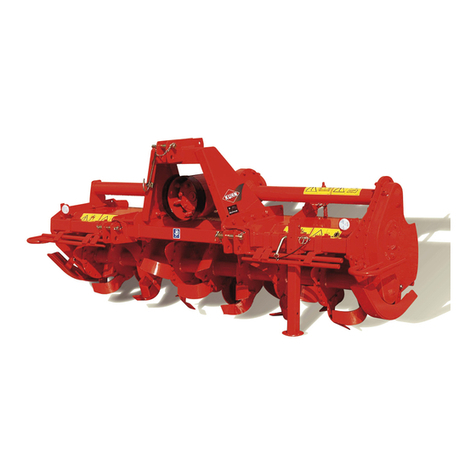GrainPro TRANSAFELINER MA3001RR0208-21 User manual

GRAINPRO®TRANSAFELINER™
INSTRUCTION MANUAL
MA3001RR0208-21

GrainPro® TranSafeliner™ Instruction Manual
MA3001RR0208-21
2/28
GrainPro Inc.
4410A Connecticut Avenue. NW, #163, Washington, DC 20008
Tel : +1 202-921-6700
Email : sales@grainpro.com
GrainPro®Philippines, Inc.
Lot 46 Efficiency Avenue, Subic Bay Gateway Park I, Subic Bay Freeport Zone 2222 Philippines
Phone: +63 47 252 7884 Fax: +63 47 252 7885 Website: www.grainpro.com
Email: salesasia@grainpro.com
GrainPro Kenya
Space Apartments, GF Shio A2 Maimahui Rd. Nairobi West, Kenya
Tel: +254 737 177 767
Fax: +254 710 933 717
Email: sales@grainpro.com
GrainPro Mexico, S de RL de CV
Ctoo. Garona No. 903, Sección Tres, Col. Amberes, 37237,
León, Gto. Mexico
Mobile: +52 1 (477) 392 0851
Email: guillermo@grainpro.com
GrainPro Costa Rica S.R.L.
Residencial Valle del Sol, Calle Lajas, Casa #27 Alto de las Palomas,
Santa Ana, San José, Costa Rica
Tel: +506 2282 9129
Email: infogpcr@grainpro.com
GrainPro India Post-Harvest Technology Pvt. Ltd.
Office Number 18A109, WeWork Berger Tower 18th Floor,
C-001/A2, Sector 16-B, Noida, INDIA –201301
Landline: +91 120 515 0017
Customer Service: +91 960 292 0202
GrainPro®Inc., 1401 K Street NW, Suite 502, Washington D.C. 20005 USA
Copyright 2019 GrainPro®, Inc.

GrainPro® TranSafeliner™ Instruction Manual
MA3001RR0208-21
3/28
TABLE OF CONTENTS
1. INTRODUCTION. .............................................................................................................................4
2. WARNINGS. .....................................................................................................................................5
3. RECOMMENDED MOISTURE CONTENT FOR SAFE STORAGE (WET BASIS) .........................5
4. SMALL PARTS.................................................................................................................................6
5. INSTALLATION ................................................................................................................................6
Preparation..................................................................................................................................6
6. ROPE METHOD...............................................................................................................................7
Attachment rope of braces (Tape)...............................................................................................7
Installation process......................................................................................................................8
7. BLOWER METHOD........................................................................................................................10
Installation process....................................................................................................................10
8. VACUUUM METHOD.....................................................................................................................11
Installation process............................................................................................................................... 11
9. MAGNET METHOD........................................................................................................................12
Installation process............................................................................................................................... 12
10. FOLDING METHOD .......................................................................................................................14
Attachment of rope braces (Tape).............................................................................................14
11. SEALING ........................................................................................................................................17
Use of Desiccants/Dry Bags (Required)....................................................................................17
Plastic Valve Installation for Pressure Decay Test and CO2or O2Reading.............................17
Sealing of 2-Track PE Zipper ....................................................................................................18
Pressure (Vacuum) Decay Test ................................................................................................20
Installing the Flexible Adapter Hose for CO2or O2Reading.....................................................21
Using Carbon Dioxide Analyzer for Monitoring (With CO2Flushing) - Optional........................22
12. CARBON DIOXIDE PURGING.......................................................................................................23
Carbon Dioxide (CO2) Safety ....................................................................................................23
Calculation of Carbon Dioxide requirement...............................................................................23
Procedure for purging with Carbon Dioxide (CO2) ....................................................................24
Closing and Opening of the Shipping Container.......................................................................27
13. MAINTENANCE AND CARE..........................................................................................................27
Repairing Punctures and Other Damages ................................................................................27
Recycling...................................................................................................................................27
14. FREQUENTLY ASKED QUESTIONS ............................................................................................27
15. WARRANTY CLAUSE....................................................................................................................28

GrainPro® TranSafeliner™ Instruction Manual
MA3001RR0208-21
4/28
1. INTRODUCTION
Transportation plays a key role in the global trade of agricultural commodities. Preserving the quality of
agricultural commodity in transit is one of the major issues affecting this global activity. Commodities
transported in containers are often infested upon arrival at destination ports because of excessive
condensation. Hence, adequate amount of moisture favored the growth and development of
microorganisms including fungi. On the other hand, the traders are very much aware of preserving the
quality of agricultural products in transit. Agricultural commodities are damaged due to excessive
condensation resulting to the growth of microorganisms and eventual infestation and spoilage.
GrainPro offers a solution for safe storage of agricultural commodities even when in transit. The GrainPro®
TranSafeliner™ (TSL™) is designed to prevent condensation, moisture ingress and control of infestation
without toxic fumigants while the commodity is in transit. TSL fits in a standard 20’ and 40’ shipping container
and is covered by a GrainPro patent.
TSL is made of a special transparent, multi-layer polyethylene (PE) film which has superior gas and moisture
barrier properties. The gases produced by natural respiration of insects and commodity are retained. The
low moisture permeability of the plastic material prevents exchange of moisture between the atmosphere
and the commodity inside the TSL thus condensation can be prevented.
1.1.FEATURES:
1.1.1. Effectively eliminates insect infestation of agricultural commodities while in transit.
1.1.2. Reduces the oxidation of commodities, growth, and development of microorganisms.
1.1.3. Designed for easy installation and disassembly in containers using tapes and nylon string.
1.1.4. Minimizes condensation, inhibits/controls mold growth, and eventual infestation.
1.1.5. Reduces expensive container rental while waiting for conventional fumigation.
1.2.PRODUCT GUARANTEE:
1.2.1. In accordance with the terms and conditions herewith, GrainPro, Inc. fully guarantees the
quality of this product provided it is used according to the instructions in this operator’s manual.
1.2.2. Please read and understand the manual thoroughly before using the TSL.
1.3.COMMENTS, COMPLAINTS, AND/OR CLARIFICATIONS:
1.3.2. We shall be glad to answer any of your questions.

GrainPro® TranSafeliner™ Instruction Manual
MA3001RR0208-21
5/28
Recommended maximum moisture content for safe storage (wet basis)
3. RECOMMENDED MOISTURE CONTENT FOR SAFE STORAGE (WET BASIS)
You may also contact us through customercare@grainpro.com for more information or for commodities
that are not on the list.
2. WARNING!
COMMODITY
RECOMMENDED MC
Barley
12%
Black Pepper
10%
Cashew nuts
8%
Chia seeds
7%
Chickpeas
12%
Cocoa beans
7%
Coffee beans
12%
Cotton seed
10%
Cowpea
12%
Maize
13.5
Millet
12%
Mung bean
12%
Oats
12%
Paddy
13.5%
Paddy, rice bran
11%
Peanuts, shelled
7%
Red Chili Pepper
8-10%
Rice, milled
12%
Rye
12%
Sesame
5.5%
Sorghum
12%
Soybean
12%
Sunflower
7%
Wheat
13%
2.1. Do not load fresh produce or commodity with high moisture into the TSL.
2.2. Do not wear shoes with spikes as this might cause damage to the TSL.
2.3. Do not directly install TSL without clearing the container van of debris and other foreign
materials.
2.4. Do not smoke while installing. Cigarette butts might burn and damage the TSL.
2.5. Do not directly insert or hook nylon rope into the TSL.
2.6. Do not put TSL on top of wooden pallet or equivalent to prevent puncture by sharp edges and
nails.
2.7. Do not allow loading vehicles (i.e., forklifts/pallet trucks) to run over the TSL as this will cause
damage to the P.E material. (Refer to 6.2.6.2 for precautionary measure).

GrainPro® TranSafeliner™ Instruction Manual
MA3001RR0208-21
6/28
4. SMALL PARTS
4.1. Liner
1 piece
4.2. 2 Track zipper slider, blue
2 pieces
4.3. Nylon string
17m x 1 piece (for TSL 20)
25m x 2 pieces (for TSL 40 and High Cube)
4.4. Desiccant (Calcium Chloride) CaCI
6 pieces for TSL 20
12 pieces for TSL 40 and High Cube
4.5. Plastic Valve
1 piece
4.6. Packaging Box
1-piece TSL 20 per box
1-piece TSL 40 or TSL High Cube per box
4.7. Woven OPP tape
15 pieces for TSL 20
26 pieces for TSL 40 and TSL High Cube
5. INSTALLATION
5.1.PREPARATION
5.1.1. Check the moisture content of the commodity
using GrainPro Moisture Meter (MM5) (available for
sale from GrainPro, Inc.) to ensure the MC is at a safe
level for storage.
5.1.2. Workers should not wear shoes with spikes
that might cause damage to the TSL.
5.1.3. Ensure that container floor is free of any sharp
objects that may damage the liner.

GrainPro® TranSafeliner™ Instruction Manual
MA3001RR0208-21
7/28
5.1.4. Place a mat or thick cardboard onthe floor
as additional protection for the TSL.
5.1.5. Carefully unfold the TSL and lay it facing
upward.
5.1.6. Pull the top portion to unfold.
6.1. ATTACHMENT OF ROPE BRACES (TAPE)
6.1.1. On the laid TSL find the broken line
markings from the back end of the TSL measure
125cm along the broken line and attach the
supplied Woven OPP Tapes.
6. ROPE METHOD

GrainPro® TranSafeliner™ Instruction Manual
MA3001RR0208-21
8/28
6.1.2. Stick another set of Woven OPP Tape
along the broken line with a 100cm distance in
between them. In total there will be 14 pieces of
rope braces (Woven OPP Tape) for TSL-20 and
26 pieces for TSL-40. See picture on the right for
rope brace location guide.
6.2. INSTALLATION PROCESS
6.2.1. Secure one end of the nylon rope into the hook
located on the side wall and into the first hook on the
ceiling of one side of the container van.
6.2.2. Insert the free end of the nylon rope onto the
first woven OPP tape and then into the hook found
on the container ceiling. The rope braces on the TSL
should be positioned in-between the hooks (except
for the first rope brace near the TSL zipper).
Note: Do not insert nylon rope into the woven
OPP tape when it is aligned with the
container’s hooks.
6.2.3. FOR TSL - 20
6.2.3.1. Hanging the liner should be done by
completing one side (left or right) of the container
first, starting from the door towards the back and
then going around the perimeter of the container.
6.2.3.2. Follow procedure in 2.2.2. until the nylon
rope is inserted through all the rope braces and
container hooks.
6.2.3.3. Pull the loose end of the nylon rope to create
tension and make sure that there are no sagging
sections on the hanged TSL.
6.2.3.4. Secure the loose end of the nylon rope on
the hook found on the mid-section of the container
door.

GrainPro® TranSafeliner™ Instruction Manual
MA3001RR0208-21
9/28
6.2.4. FOR TSL - 40
6.2.4.1. Hanging of liner should be done by
completing one side (left or right) of the container
first, starting from the door towards the back of the
container. Two nylon ropes are required to be used
for the TSL - 40, one for each side of the container.
6.2.4.2. Follow procedure in 2.2.2. until the nylon
rope is inserted through the rope braces and hooks
on one side of the container.
6.2.4.3. When one side of the container is complete,
pull the lose end of the nylon rope towards the door
of the container and insert it through the first hook
found near the door.
6.2.4.4. Pull the loose end of the nylon rope to create
tension and make sure that there are no sagging
sections on the hanged TSL.
6.2.4.5. Then secure the loose end of the nylon rope
onto the hook found on the mid-section of the
container door.
6.2.4.6. Procedures 2.2.4.1 to 2.2.4.5 will be used
on the other side of the container.
6.2.5. Secure excess liner material near the door
perimeter by folding and sticking it on the sides of
the door using tapes to prevent possible damage
and to make it more accessible during loading.
6.2.6. Place cardboards on the TSL floor and
along the walls for added protection.
6.2.6.1. For Manual Loading - workers should
not wear shoes with spikes that might cause damage
to the liner.
6.2.6.2. For Loading with forklift –place extra
protection along the walls and floor.

GrainPro® TranSafeliner™ Instruction Manual
MA3001RR0208-21
10/28
6.2.7. When stacking bags make sure to leave
at least 20cm distance between the roof of the
container and top of the stacks to prevent
condensation.
7. BLOWER METHOD
7.1. INSTALLATION PROCESS
7.1.1. Turn on the industrial fan and introduce air
into the TSL by holding it open. At least 2 persons
is needed to hold the opening while air is being
blown inside the liner.
7.1.2. Wait until the TSL spreads perfectly on the
sides and ceiling of the container van. A
worker can also enter the TSL to help spread
the TSL material and help correct any folds
in the TSL.
7.1.3. Secure excess liner material near the door
perimeter by folding and sticking it on the
sides of the door using tapes to prevent
possible damage and to make it more
accessible during loading.
7.1.4. Place card boards on the TSL floor and along
the walls for added protection.

GrainPro® TranSafeliner™ Instruction Manual
MA3001RR0208-21
11/28
7.1.4.1. For Manual Loading - workers should not
wear shoes with spikes that might cause
damage to the liner.
7.1.5. When stacking bags make sure to leave at
least 20cm distance between the roof of the
container and top of the stacks to prevent
condensation.
8. VACUUM METHOD
8.1. INSTALLATION PROCESS
8.1.1.For the vacuum method, a ventilator/fan shall
be used to create negative pressure between
the shipping container and the TSL. The
ventilator should have at least a 1000
m3/minute of flow rate.
8.1.2. Place the ventilator/fan on the top corner of
the container next to its door, this could be on either
left or right side of the container. A clamp could be
used to keep the ventilator in place.
8.1.3. Fold at least 150cm of the TSL away from the
door opening starting from the zipper. Then tape
the folded section around the perimeter of the
container door.
Note: Make sure not to cover the ventilator with the
folded TSL section to avoid possible damage.

GrainPro® TranSafeliner™ Instruction Manual
MA3001RR0208-21
12/28
8.1.4. Turn on the ventilator and wait until the TSL
spreads perfectly on the sides and ceiling of the
container van. A worker can also enter the TSL to
help spread the TSL material and help correct any
folds in the TSL.
8.1.5. Place cardboards on the TSL floor and along
the walls for added protection.
8.1.5.1. For Manual Loading - workers should
not wear shoes with spikes that might cause
damage to the liner.
8.1.6. When stacking bags, make sure to leave at
least 20cm distance between the roof of the
container and top of the stacks to prevent
condensation.
9. MAGNET METHOD
9.1. INSTALLATION PROCESS
9.1.1. Use magnets with at least 50kg lifting capacity. The magnets must be procured locally.
9.1.2. With the magnet method, the installation of
magnets shall be done inside and from the back
towards the container door. At least 2 persons are
needed for ease of installing the TSL. Prior to
installation of TSL, the location of the broken lines
should be determined first.
9.1.3. The first magnet shall be placed 125cm from
the end and inside of the TSL. Then attach the TSL

GrainPro® TranSafeliner™ Instruction Manual
MA3001RR0208-21
13/28
and magnet to the corner at the back of the
container.
NOTE: Magnets usually have sharp edges and
may cause the liner to shear when in direct contact.
Ensure that magnets are covered or wrapped with
soft fabric/plastic sheets to prevent liner from
tearing.
9.1.4. The second magnet shall be attached on the
same side and about one meter from the first one.
9.1.5. Do procedures 2.1.2. to 2.1.3. to the opposite
side. Installation shall be done by twos and
alternating (left to right/right to left side) fashion to
give workers easier movement inside the TSL.
9.1.6. Succeeding magnets are positioned 100cm
from each other and alternately on opposite sides
until the end of the container is reached. As
standard procedure, use 12 magnets for 20 ft
container and 24 magnets for 40 ft container.
9.1.7. Secure excess liner material near the door
perimeter by folding and sticking it on the sides of
the door using tapes to prevent possible damage
and to make it more accessible during loading.
9.1.8. Place card boards on the TSL floor and along
the walls for added protection.
9.1.8.1. For Manual Loading - workers should
not wear shoes with spikes that might cause
damage to the liner.

GrainPro® TranSafeliner™ Instruction Manual
MA3001RR0208-21
14/28
9.1.9. The magnets shall be removed as the
container is loaded. Remove the magnets on the
sections of the container that is already loaded.
9.1.10. When stacking bags make sure to leave at
least 20cm distance between the roof of the
container and top of the stacks to prevent
condensation.
10.FOLDING METHOD
A folding method refers a series of alternating folds to create multiple panels/sections of a similar size.
The parallel pleats formed by the alternating folds resemble the expandable mid-section of an accordion
musical instrument.
10.1. ATTACHMENT OF ROPE BRACES (TAPE)
10.1.1. On the laid TSL find the broken line markings
from the back end of the TSL measure 125cm along
the broken line and attach the supplied Woven OPP
Tapes.
10.1.2. Stick another set of Woven OPP Tape along
the broken line with a 100cm distance in between
them. In total there will be 14 pieces of rope braces
(Woven OPP Tape) for TSL-20 and 26 pieces for
TSL-40. See picture on the right for rope brace
location guide.
10.2. INSTALLATION PROCESS
10.2.1. Secure one end of the nylon rope (flexible
nylon cord) into the hook located on the side wall
and into the first hook on the ceiling of one side of
the container van.

GrainPro® TranSafeliner™ Instruction Manual
MA3001RR0208-21
15/28
10.2.2. Insert the nylon rope through all the woven
OPP tapes attached on one side the TSL then into
the hook found on the back end of the container.
10.2.3. FOR TSL - 20
10.2.3.1. Hanging of liner should be done by
completing one side (left or right) of the container
first, starting from the door towards the back and
then going around the perimeter of the container.
10.2.3.2. Follow procedure in 2.2.2. and when one
side is finished insert the loose end of the nylon
rope to the hook on the other side (back-end hook)
and follow procedure 2.2.2. This time from the back
towards the front.
10.2.3.3. Pull the loose end of the nylon rope to
create tension and make sure that there are no
sagging sections on the hanged TSL.
10.2.3.4. Secure the loose end of the nylon rope on
the hook found on the mid-section of the container
door.
10.2.4. FOR TSL - 40
10.2.4.1. Hanging the liner should be done by
completing one side (left or right) of the container
first, starting from the door towards the back of the
container. Two nylon ropes are required to be used
for the TSL - 40, one for each side of the container.
10.2.4.2. Follow procedure in 2.2.2. until the nylon
rope is inserted through the rope braces and hooks
(front and back end only) on one side of the
container.
10.2.4.3. When one side of the container is
complete, pull the lose end of the nylon rope
towards the door of the container and insert it
through the first hook found near the door.
10.2.4.4. Pull the loose end of the nylon rope to
create tension and make sure that there are no
sagging sections on the hanged TSL.
10.2.4.5. Then secure the loose end of the nylon
rope on the hook found on the mid- section of the
container door.
10.2.4.6. Complete procedures 2.2.4.1 to 2.2.4.5
onto the other side of the container.

GrainPro® TranSafeliner™ Instruction Manual
MA3001RR0208-21
16/28
10.2.5. Carefully slide the liner towards the back of
the container. Leave enough space for initial
loading.
10.2.6. Add 2 pieces of carabiners (not included in
the package) for added support. Insert the
carabiners into the nylon rope and fasten into the
container hooks nearest the folded section of the
liner. The carabiners are used for folding method to
avoid sagging of the liner during installation.
10.2.7. Fold the excess TSL material neatly and
secure it around the perimeter of the container
walls with tape.
10.2.8. Place cardboards on the TSL floor and
along the walls for added protection.
10.2.8.1. For Forklift loading - place rubber mats
on the TSL floor for added protection.
10.2.8.2. For Manual Loading - workers should
not wear shoes with spikes that might cause
damage to the liner.
10.2.9. After loading the first section of the TSL,
remove the carabiners and tapes then unfold the
liner. Pull it a few meters towards the front so the
next section of the TSL could be loaded. Then
follow procedures 2.2.6. to 2.2.8.
10.2.10. Complete procedure 2.2.9. until the TSL is
fully loaded.

GrainPro® TranSafeliner™ Instruction Manual
MA3001RR0208-21
17/28
10.2.11. Make sure to leave at least 20cm distance
between the roof of the container and top of the
stacks to prevent condensation.
11.1. USE OF DESICCANTS/DRY BAGS (REQUIRED)
11.1.1. Desiccants are commonly used to protect
goods against moisture damage. Hygroscopic
commodities, such as cocoa, coffee, and various nuts
and grains are particularly susceptible to mold and rot
when exposed to condensation and humidity.
11.1.2. Requirement:
a. One-thousand two hundred (1200) grams or 6 bags of GrainPro Dry Bags per 20-footer.
b. Two-thousand four hundred (2400) grams or 12 bags of GrainPro Dry Bags per 40-footer.
Note: 1 GrainPro Dry Bag contains 200 grams of calcium chloride and can absorb grams of moisture.
11.1.3. Place the GrainPro Dry Bags in perforated bags or sacks to prevent direct contact with commodity.
11.1.4. Cardboards may be placed on top of the stack. Cardboards provide increased water absorption.
Then put the desiccants on top of the cardboards.
11.2. PLASTIC VALVE INSTALLATION FOR PRESSURE DECAY TEST (PDT), OR CO2OR
O2READING
11.2.1. Install plastic valve before sealing or zipping the liner. Conduct PDT after sealing. CO2or O2
reading (optional) is taken upon arrival of the container to verify the integrity of the TSL’s
hermeticity. After use, close the plastic valve.
11.2.2. Plastic valve components:
A. Cap –To open and close the valve.
B. Body –Where tube or hose is inserted for
Pressure Decay Test (PDT) and
CO2or O2reading
C. Base –Use for piercing the liner.
11. SEALING

GrainPro® TranSafeliner™ Instruction Manual
MA3001RR0208-21
18/28
11.2.3. Dismantle the plastic valve by unscrewing
the base.
11.2.4. Pierce the TSL using the plastic valve.
Piercing should be done from the inner side of the
TSL (approximately 20 cm from the zipper).
11.2.5. Screw the plastic valve body. The cap of the
plastic valve should be positioned outside the loaded
TSL. Firmly tighten the body into the base to prevent
leakage.
11.3. SEALING OF 2-TRACK PE ZIPPER
11.3.1. Remove the tapes and unfold the excess
liner from the door perimeter and let it loose.

GrainPro® TranSafeliner™ Instruction Manual
MA3001RR0208-21
19/28
11.3.2. Untie the nylon rope from the rod on the side
wall of container van.
11.3.3. Pull the rope all the way out of the
container to provide space between roof and
liner for air circulation.
11.3.4. Hold the 2-track zippers together. Align
for proper sealing.
11.3.5. Manually zip a few centimeters enough to
initially engage the slider.
11.3.6. Position the slider on the manually zipped
portion of the zip lock.

GrainPro® TranSafeliner™ Instruction Manual
MA3001RR0208-21
20/28
11.3.7. For ease of zipping two persons are
required. One person does the zipping, and the other
person holds the other end steadily, making sure
both sections of the zipper are in a straight line to
avoid the zipper length being misaligned. Moving the
slider while the zipper or slider is curved forces one
of the zipper sections to elongate.
11.3.8. If uneven zipper ends are observed, both
ends of the zipper should be slightly stretched and
do the zipping from end to end.
11.3.9. Fold extra liner and tape it against the stack.
Ensure that no liner is stuck in-between doors.
11.4. PRESSURE DECAY (VACUUM) TEST
11.4.1. After zipping, perform a pressure (vacuum)
decay test (PDT) to ensure gas-tightness. With this
test a manometer, vacuum pump and stopwatch are
needed. A digital manometer of a commercially
available or improvised U-tube manometer can be
used to monitor the pressure.
Table of contents
Other GrainPro Farm Equipment manuals
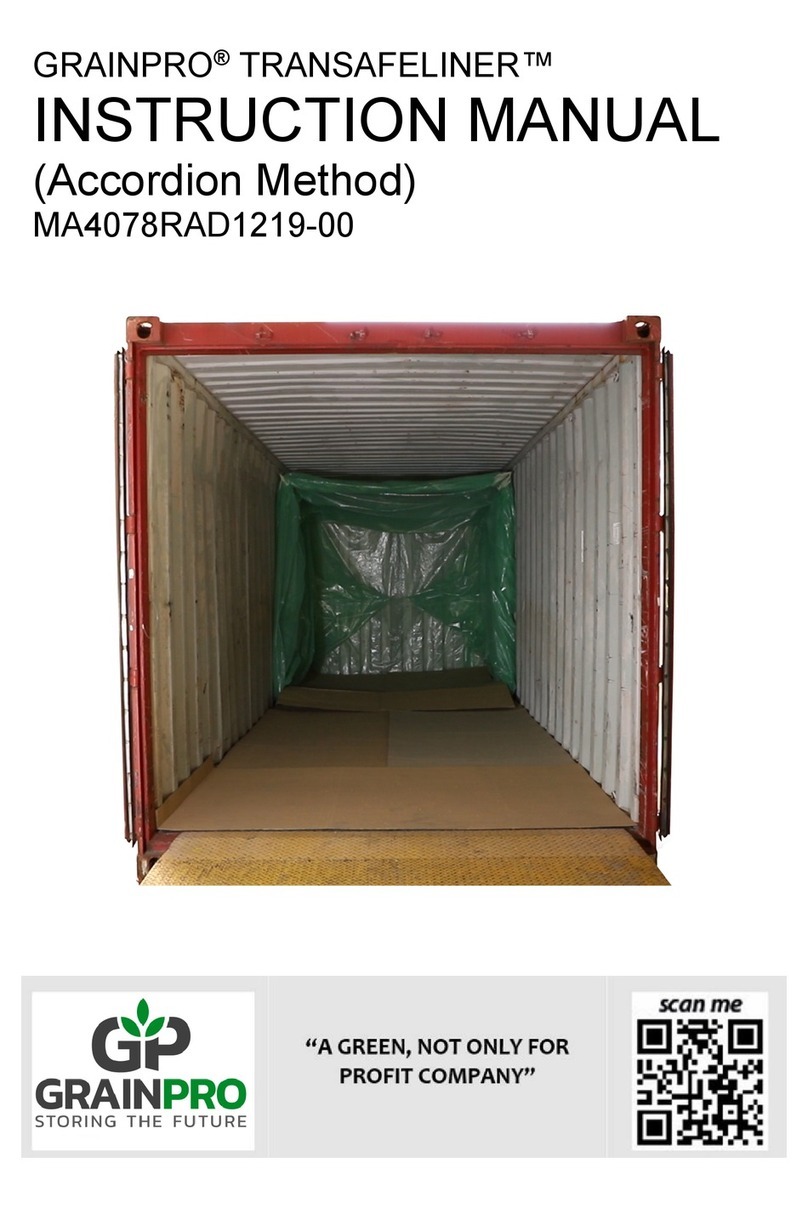
GrainPro
GrainPro TRANSAFELINER User manual
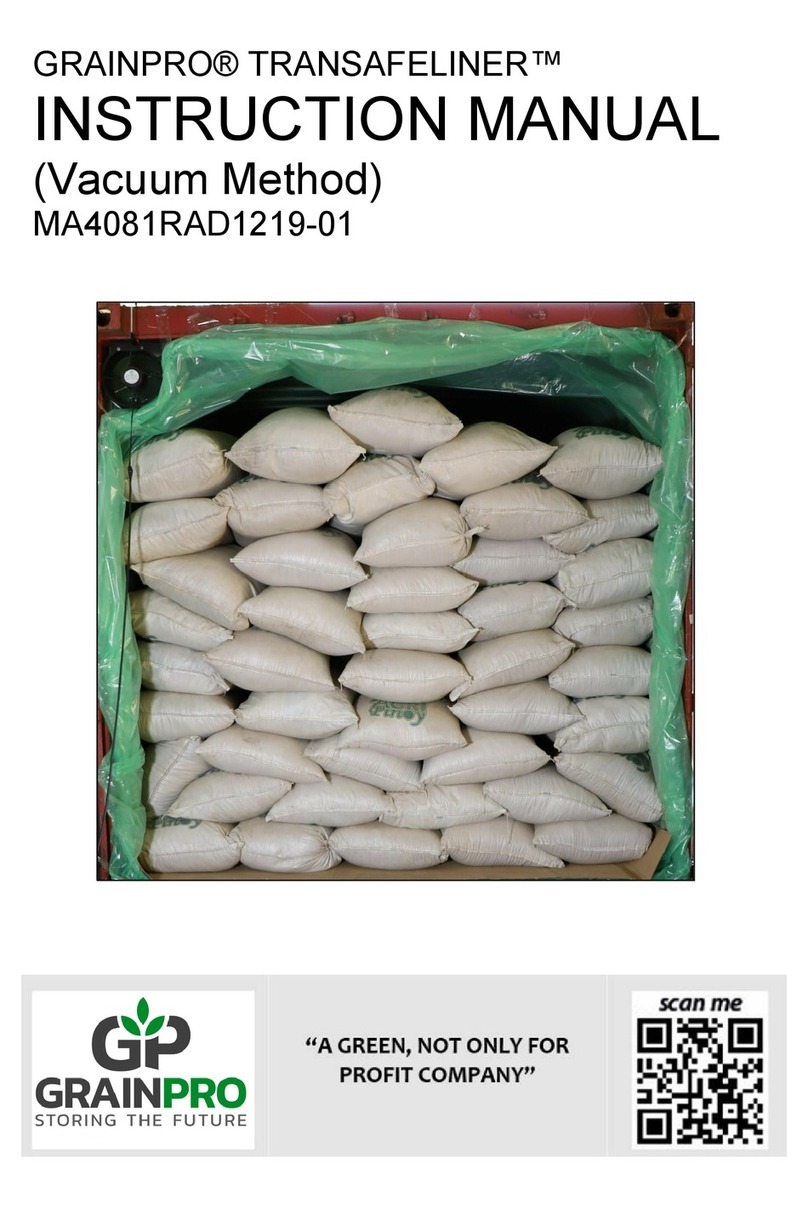
GrainPro
GrainPro TRANSAFELINER MA4081RAD1219-01 User manual
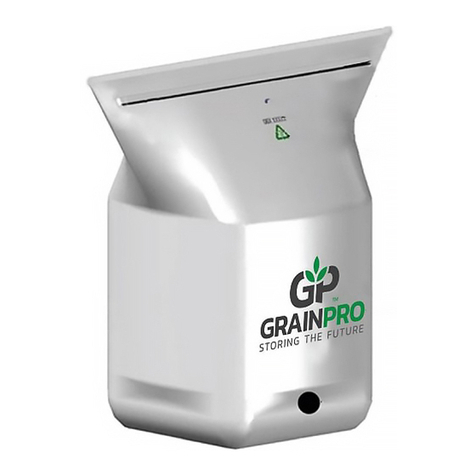
GrainPro
GrainPro GRAINSAFE 1.0/GHF User manual
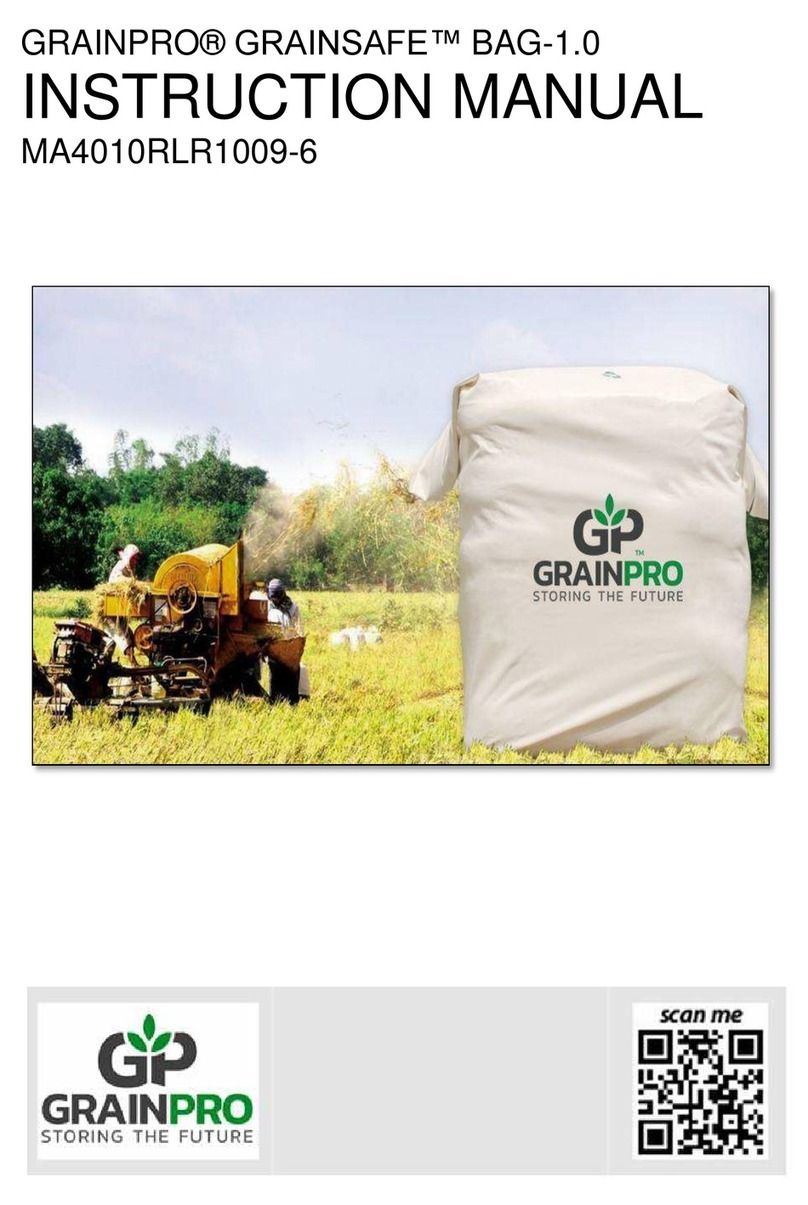
GrainPro
GrainPro GRAINSAFE BAG-1.0 User manual

GrainPro
GrainPro TRANSAFELINER BULK User manual

GrainPro
GrainPro TRANSAFELINER User manual
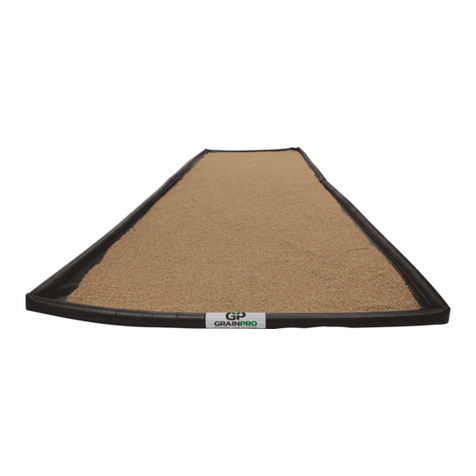
GrainPro
GrainPro COLLAPSIBLE DRYER CASE II User manual
Popular Farm Equipment manuals by other brands

Finn
Finn HydroSeeder TITAN280 Parts and Operator's Manual
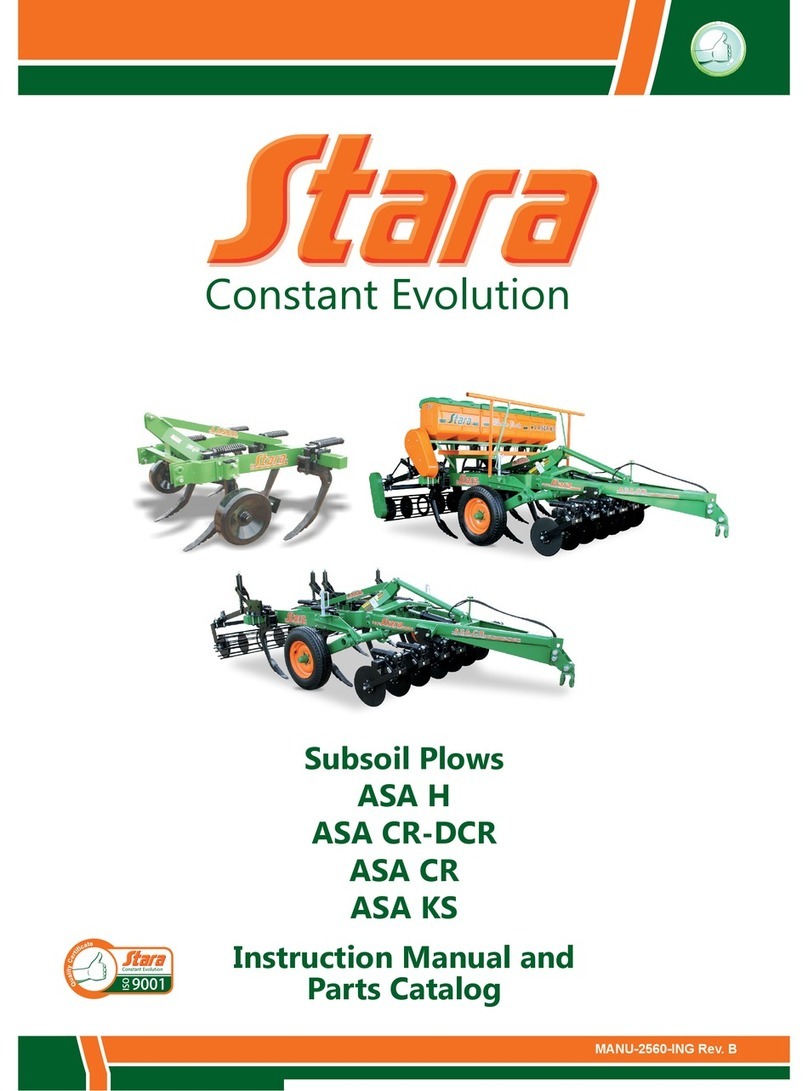
Stara
Stara ASA H Instruction manual and parts catalog
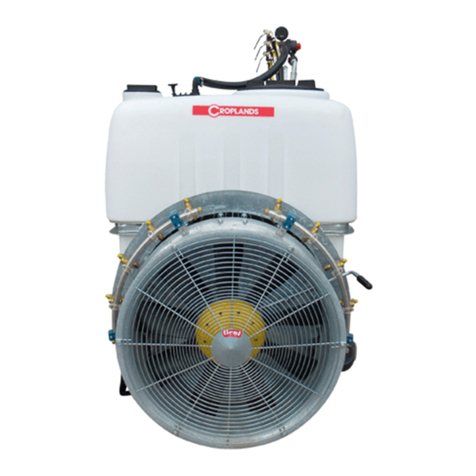
Croplands
Croplands CROPAIR 300 Operator's manual
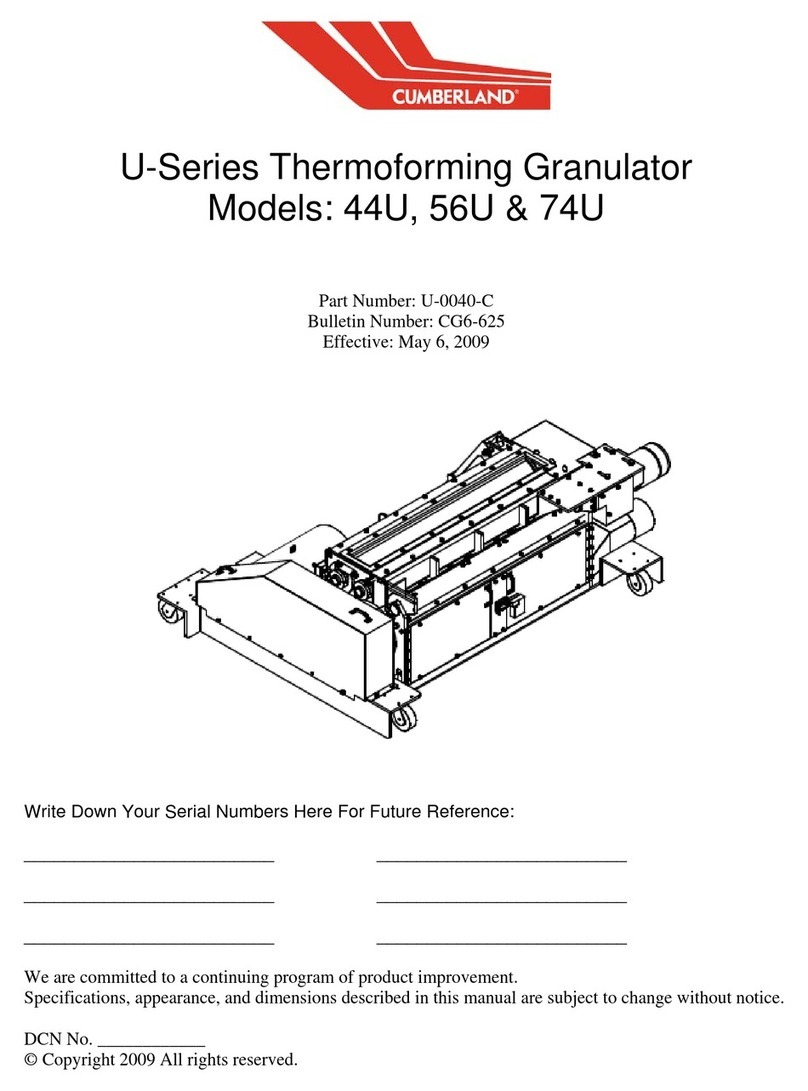
Cumberland
Cumberland U-Series manual
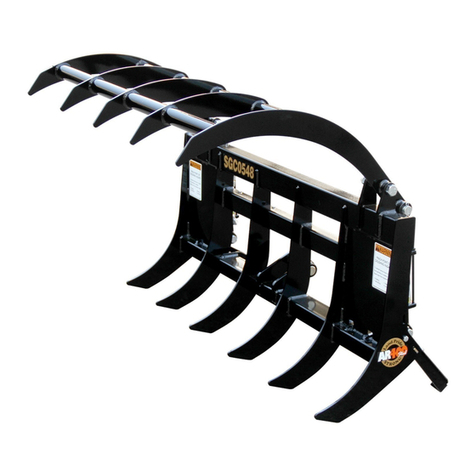
Land Pride
Land Pride SGC0548 Operator's manual

Shelbourne
Shelbourne Powerspread Pro 1800-2300 Operator's manual
